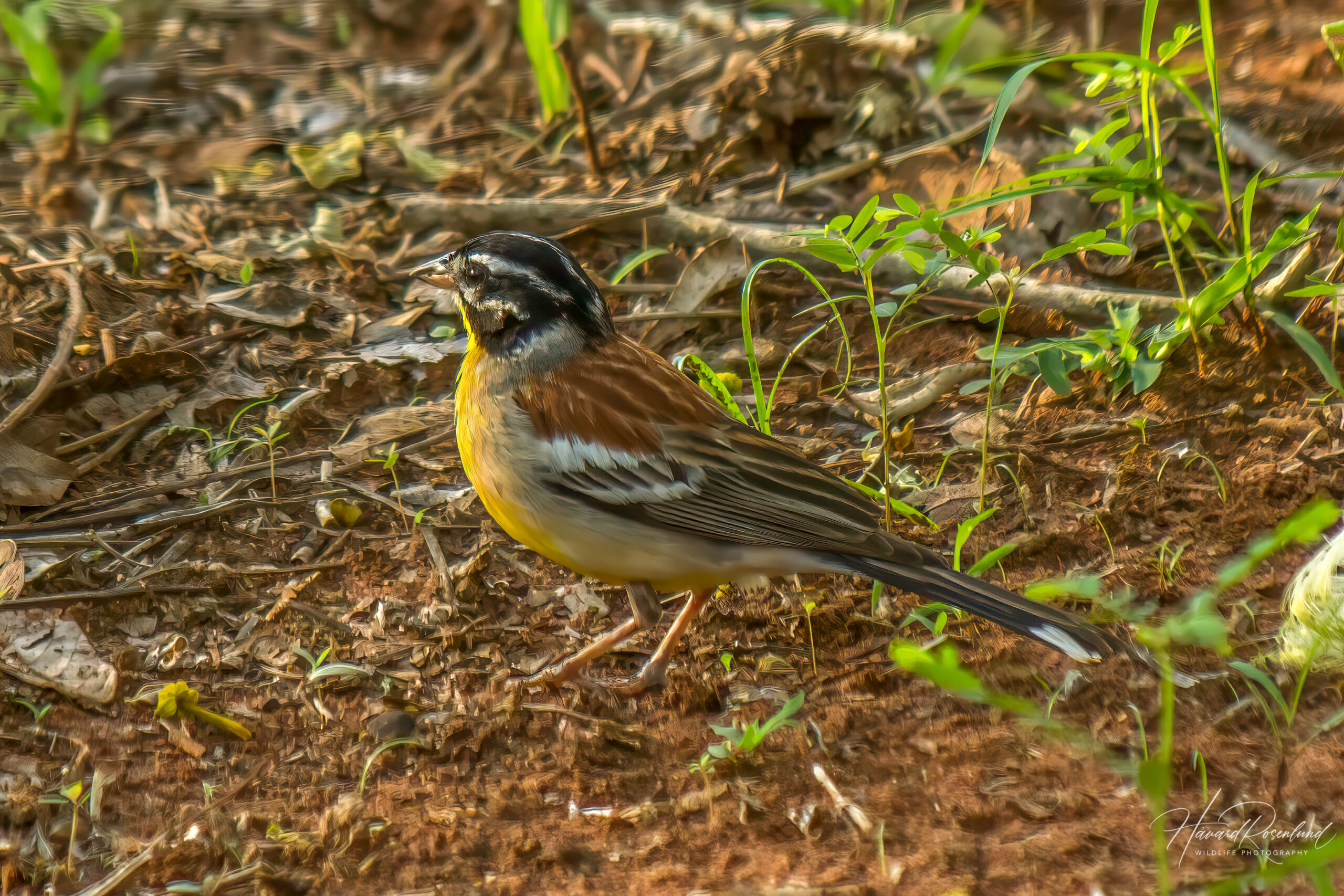Golden-breasted Bunting
(Emberiza flaviventris)
Description
The golden-breasted bunting (Emberiza flaviventris) is a small songbird in the bunting family. It reaches a length of 15-16 cm (6-6.3 in). It is a colorful bird, with a striking and bright orange-yellow chest and belly. The adult male has a telltale black head with contrasting white stripes running the length of the head. One stripe runs along the crown, whereas the other stripes runs above and below the eyes. The female is very similar, but the colors are not as bright and contrasting. Back and wings of both sexes are chestnut and brown, with grey colors towards the tail. Juveniles are paler and duller in color.
Diet & habitat
Golden-breasted buntings are generally found in savannas and dry open woodlands. It can also be found in shrublands, rocky areas, croplands, and gardens. Main diet consists of seeds, flower buds, and insects, which it finds while foraging in the foliage of smaller trees and shrubs.
Nesting
Golden-breasted bunting is a monogamous and solitary nester. The nest is commonly situated in the fork of a tree or a bush, and is made up of grass, tendrils, petioles, and other similar plant materials. The female lays two to five eggs which she incubates for 12-13 days. After hatching, both parents feed the chicks seeds and insects for about 13-17 days before they leave the nest.
Status
The golden-breasted bunting is a common bird throughout southern Africa, and there are three classified subspecies. There are no threats to the species, and it is listed as least concern on the IUCN Red List.






